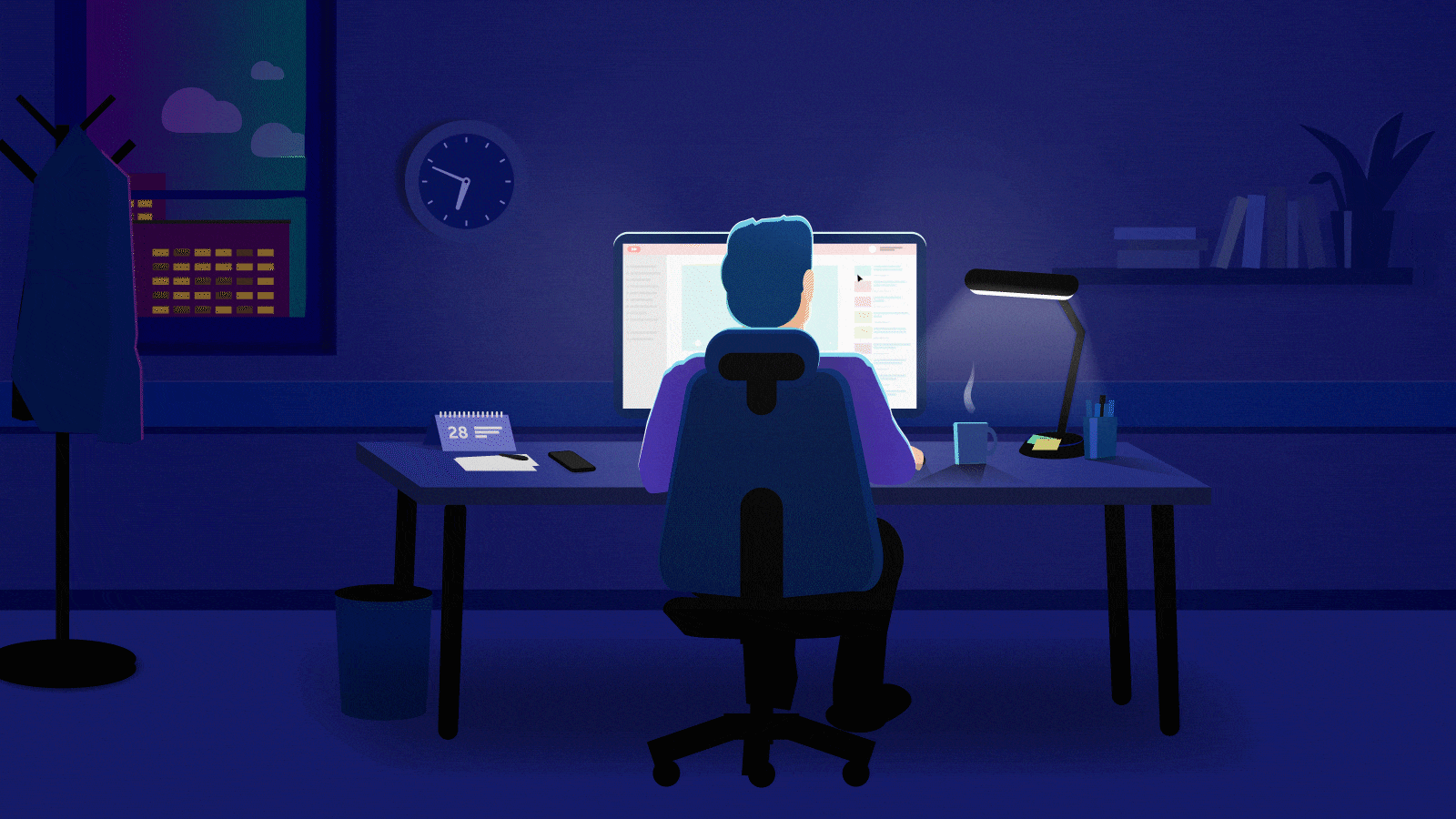The biggest challenge in L&D is “time famine”
The biggest challenge for learning and development is finding time to learn. How much time do we actually have for learning and gaining new skills?

In our global study on the state of L&D, we found for the second year in a row that nearly half of all people believe the biggest challenge for learning and development is a lack of time. Another survey revealed that 80% of 2.5 million Americans felt they did not have the time to do everything they needed to do each day.
In actuality, research shows that most of us have more free time now than we did 50 years ago, and the hours we work have actually decreased. So, why do we as a society feel that we lack time?
In arguably the most popular online course of all time, “The Science of Well-Being,” taught by Yale Professor Laurie Santos, Santos breaks down the concept of time affluence as being ‘the sense of having plenty of time,” while “time famine is a sense of not having enough time.” Ashley Whillans, assistant professor at Harvard Business School, wrote in the Harvard Business Review that time famine can be described as, “a collective cultural failure to effectively manage our most precious resource, time.”
We have more time, but it feels like we have less of it. We all have 24 hours in a day, but where are we currently spending our time? What might motivate us to allocate some of our time for learning?
“Rather than optimize for this resource by using it intentionally, we squander it without even realizing that is what we are doing.”
— Anthony Wing Kosner, editorial strategist at Dropbox
Where do we spend our time every week?
We have 168 hours each week (24 hours a day)
We spend roughly 40 hours at work a week (8 hours a day)

In theory, we are supposed to spend 56 hours a week (8 hours a day) sleeping.
Where does the other 72 hours a week (10 hours a day) go?
Undoubtedly, some of us spend this remaining time eating, exercising, and hanging out with our friends and family. Some of this time will go to appointments, hobbies, and vacation. A large portion of these 72 hours a week can be capitalized on with intention and microlearning and with the right tools in place, people can find and prioritize learning content relevant to their goals.
Time we can spend learning
On your commute
According to the INRIX 2019 Scorecard, an analysis of congestion (traffic) and mobility trends in more than 900 cities globally, across 43 countries, Bogota, Colombia, tops the list with drivers losing 191 hours per year (3.67 hours a week) to congestion.

Microlearning in traffic
If you are in London traffic, spending 2.8 hours a week driving to work and back, you can spend 33.6 minutes a day, Monday through Friday listening to an audiobook, podcast series, or even learning a new language.
A medium-sized novel with around 320 pages (90,000 words) can take about 10.5 hours.
At this rate, you can finish a book every 3.75 weeks, or about 14 books a year.
How much time do you spend commuting?
Replace your media consumption with learning
Social media consumption
As of 2018, the average daily social media usage of internet users worldwide amounted to 144 minutes per day (16.8 hours a week or 873.6 hours a year).
With the 16.8 hours a week (873.6 hours a year) that is typically spent on social media, you can finish 83 books a year.
It takes an equivalent of 128 credit hours or 384 hours* to graduate with a degree from Harvard.
*3 credit hours (1 course) = 3 hours in class per week = 6-9 hours study time per week.
128 credit hours = 128 hours in class per week + 256-384 hours of studying = 384 to 512 hours to achieve a college degree.
The amount of time we spend on social media per year is more time than it would take to achieve a degree in a subject that interests us.
TV & on-demand streaming consumption
The average user spends 1 hour and 11 minutes (or 71 minutes) each day watching Netflix or 8.28 hours a week (430.56 hours a year).
Estimates suggest that in 2019 U.S. adults will spend an average of 3 hours and 35 minutes watching TV each day (25 hours a week or 1300 hours a year).
Microlearning instead of Netflix and chilling
If you spent the same time watching Netflix, you could have gained insight from 430 (1 hour long) webinars or podcasts in one year. You could even reach basic fluency in a foreign language.
Being intentional with our time
Although we have more time than ever before, according to the first-quarter 2020 Nielsen Total Audience Report, nearly half an adult’s day is dedicated to consuming TV content. In fact, American adults spend over 11 hours per day listening to, watching, reading, or generally interacting with media, as well as a portion of the time we spend commuting. These two areas are opportunities to shift towards learning.
It is important to be diligent with our most valuable and depreciative asset: time.
There are several tools for tracking your personal time and plenty of data sources on our devices that can show how you are spending your time.
Got a minute?
It only takes 20 hours to learn new skills.
In the TEDtalk “The first 20 hours — how to learn anything” by Josh Kaufman, Kaufman dissects his systematic approach to rapid skill acquisition. He describes how to learn any new skill by completing just 20 hours of focused, deliberate practice, during which you’ll go from knowing absolutely nothing to performing noticeably well. His method shows you how to deconstruct complex skills, maximize productive practice, and remove common learning barriers.
Once you know how much time you have available that could be shifted towards learning, what will you learn? How can you achieve your most ambitious goals?
Microlearning towards Macro goals
According to Josh Kaufman’s ‘Learn Anything in 20 hours’ theory.
1. Deconstruct the skill.
Decide exactly what you want to do with the skill and break the skill down into smaller pieces, by practicing the most important skills.
2. Learn enough to correct yourself.
Practice just enough to notice when you make mistakes so you can get on the right path.
3. Remove the distractions.
Disable notifications and remove all the distractions.
4. Practice at least 20 hours.
Try to do 20 hours of deliberate practice. Stick with it no matter what.
Ready to learn?

The definitive guide to microlearning
The what, why, and how-to guide to inject microlearning into your company.
DOWNLOAD GUIDE



